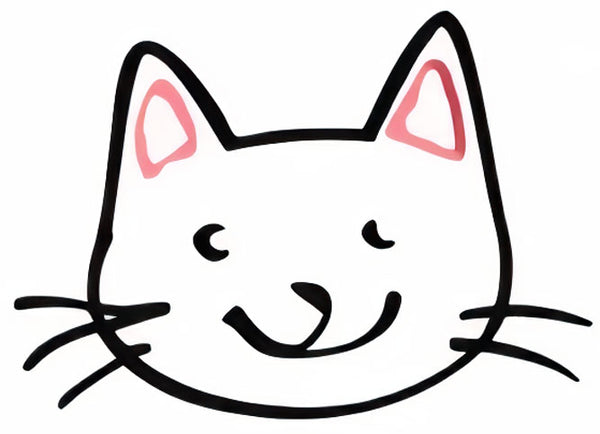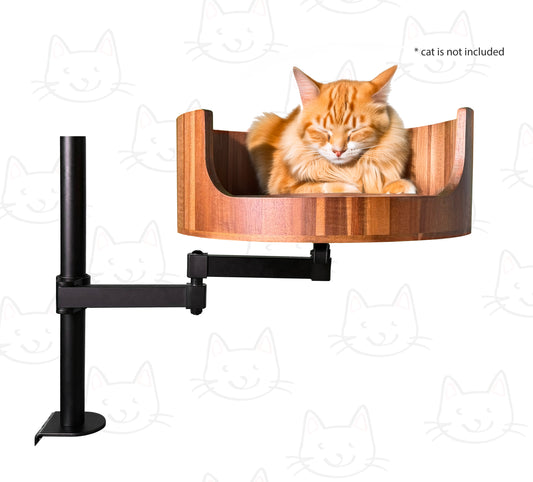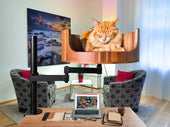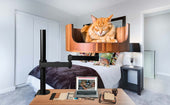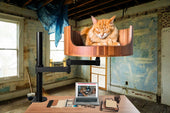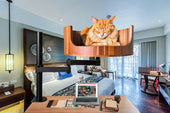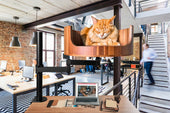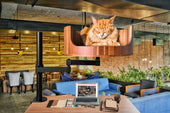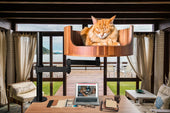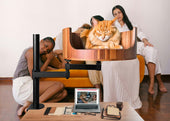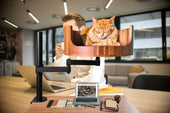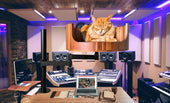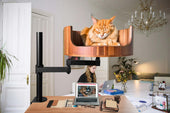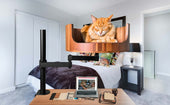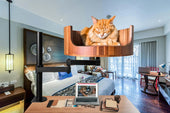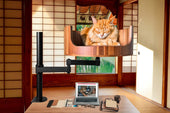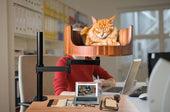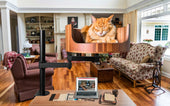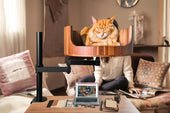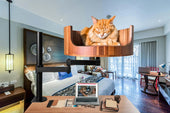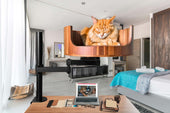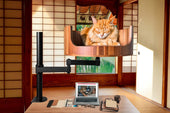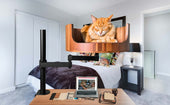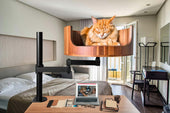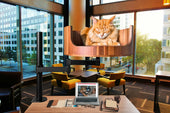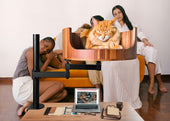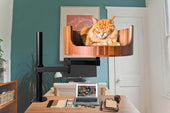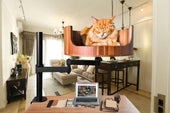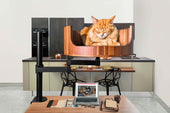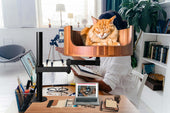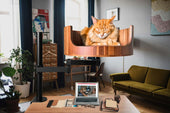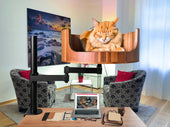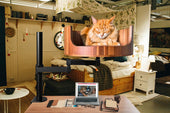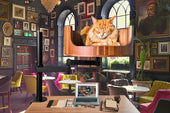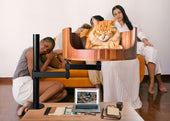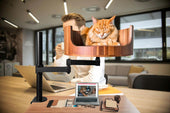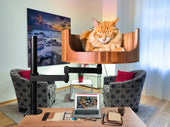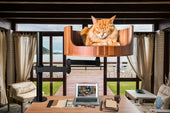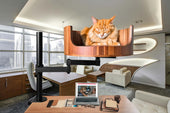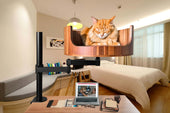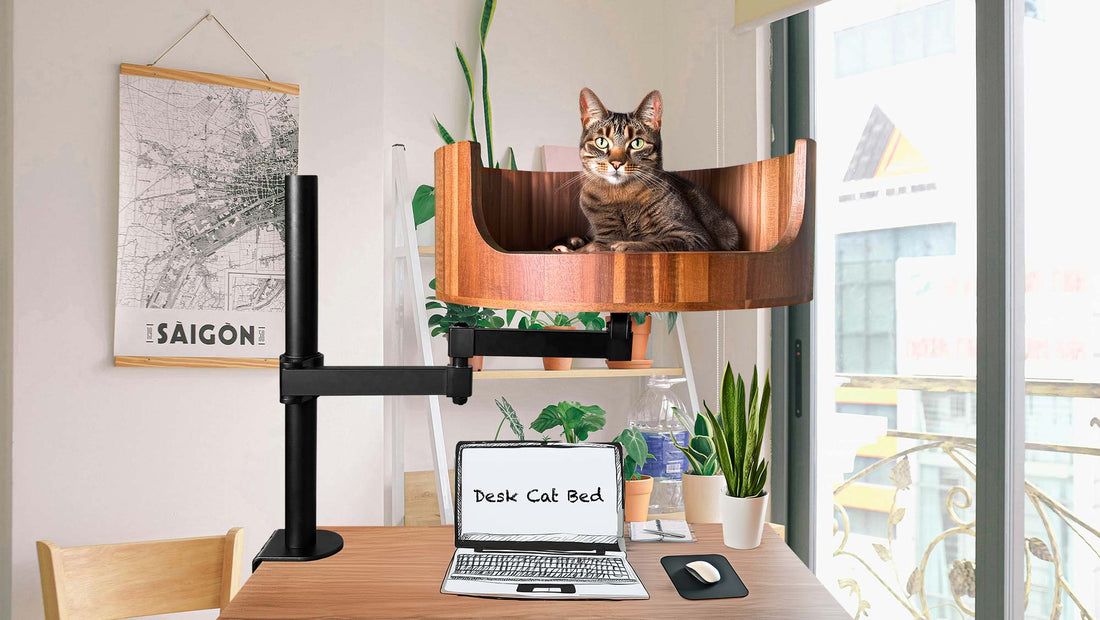
Cat Tail Quiver: Understanding Feline Body Language
Share
Have you ever wondered what your cat is trying to tell you by flicking its tail? Understanding feline body language is key to better communication with our furry friends. In this article, we will delve into the fascinating world of cat tail quivers and decode the messages they convey.
Cats use their tails to express a wide range of emotions, from excitement to fear to aggression. By paying attention to the way their tails move, we can gain insight into our cats' moods and intentions. Whether your cat's tail is held high in a confident curve, swishing back and forth in annoyance, or puffed up in a defensive posture, each movement has a specific meaning. By deciphering these signals, we can better understand our cats' needs and provide them with the care and attention they deserve.
1. The position and movement of a cat's tail can provide valuable insights into its mood and intentions.
2. A tail held high indicates a friendly and confident cat, while a low or tucked tail might signal fear or aggression.
3. Rapid twitching or lashing of the tail may be a sign of irritation or arousal.
4. Understanding feline body language can help improve communication and strengthen the bond between cats and their human companions.
5. By observing and interpreting a cat's tail signals, we can respond appropriately and provide a more enriching environment for our feline friends.
1. Tail Positions and Meanings
One of the most important aspects of understanding feline body language is recognizing the different positions of a cat's tail and what they signify. For example, a cat holding its tail upright and slightly curved at the tip is often feeling confident and friendly. On the other hand, a cat with its tail low or tucked between its legs may be feeling scared or submissive. By paying attention to your cat's tail movements, you can better understand their emotional state and respond accordingly.
2. Puffed-Up Tails: Fear or Aggression?
When a cat's tail becomes puffed up and bristled, it is a clear sign of fear or aggression. This defensive posture is meant to make the cat appear larger and more intimidating to potential threats. It's important to give your cat space and time to calm down if you notice their tail in this position, as trying to approach them could result in aggression or stress. Understanding the reasons behind a puffed-up tail can help you provide the necessary support and reassurance to your cat during these moments.
3. Twitching Tails and Agitation
A cat's tail twitching rapidly back and forth is a sign of agitation or irritation. This behavior can indicate that your cat is feeling annoyed, frustrated, or overstimulated. It's crucial to pay attention to these signs and give your cat some space to relax and calm down. Ignoring twitching tails and continuing to engage with your cat could lead to negative behaviors or aggression. By recognizing these subtle cues in your cat's body language, you can prevent conflicts and maintain a positive relationship with your feline companion.
Frequently Asked Questions
What is cat tail quiver and why does it happen?
Cat tail quiver or trembling can be a sign of stress, excitement, or physical discomfort in cats. It can also occur as a natural response to certain stimuli, such as when a cat is hunting or feeling particularly affectionate. If your cat's tail quivers frequently and you are concerned, it's best to consult with a veterinarian to rule out any underlying health issues.
How can the Desk Cat Nest help with cat tail quiver?
The Desk Cat Nest provides a cozy and secure space for your cat to relax and feel safe. By having their own designated area on your desk, your cat can retreat to the Desk Cat Nest when they need a break or want to feel more comfortable. This can help reduce stress and anxiety, which may in turn decrease instances of tail quivering.
Is the Desk Cat Nest easy to assemble and use?
Yes, the Desk Cat Nest is designed to be easy to assemble and use. Simply follow the provided instructions to set it up on your desk in a stable and secure manner. Your cat can then easily access the nest and make it their new favorite spot to hang out.
Can the Desk Cat Nest accommodate larger cat breeds?
The Desk Cat Nest is spacious enough to comfortably accommodate most cat breeds, including larger ones. The sturdy construction of the nest ensures that it can support the weight of your cat without any issues, providing a safe and snug space for them to enjoy.
Is the Desk Cat Nest easy to clean and maintain?
Yes, the Desk Cat Nest is designed with your convenience in mind. The removable pillow and washable cover make it easy to clean and maintain the nest. Simply remove the pillow and cover, wash them according to the instructions, and your Desk Cat Nest will be fresh and ready for your cat to enjoy once again.
In conclusion, the Desk Cat Bed is a valuable choice for addressing cat tail quiver due to its unique design that provides a cozy and secure space for cats to rest and relax. By offering a safe and comfortable environment, this bed can help reduce stress and anxiety in cats, ultimately minimizing the occurrence of tail quivering. Additionally, the Desk Cat Bed promotes proper spinal alignment and supports overall feline health. With its combination of comfort and functionality, this innovative product is a must-have for any cat owner looking to improve their pet's well-being.
